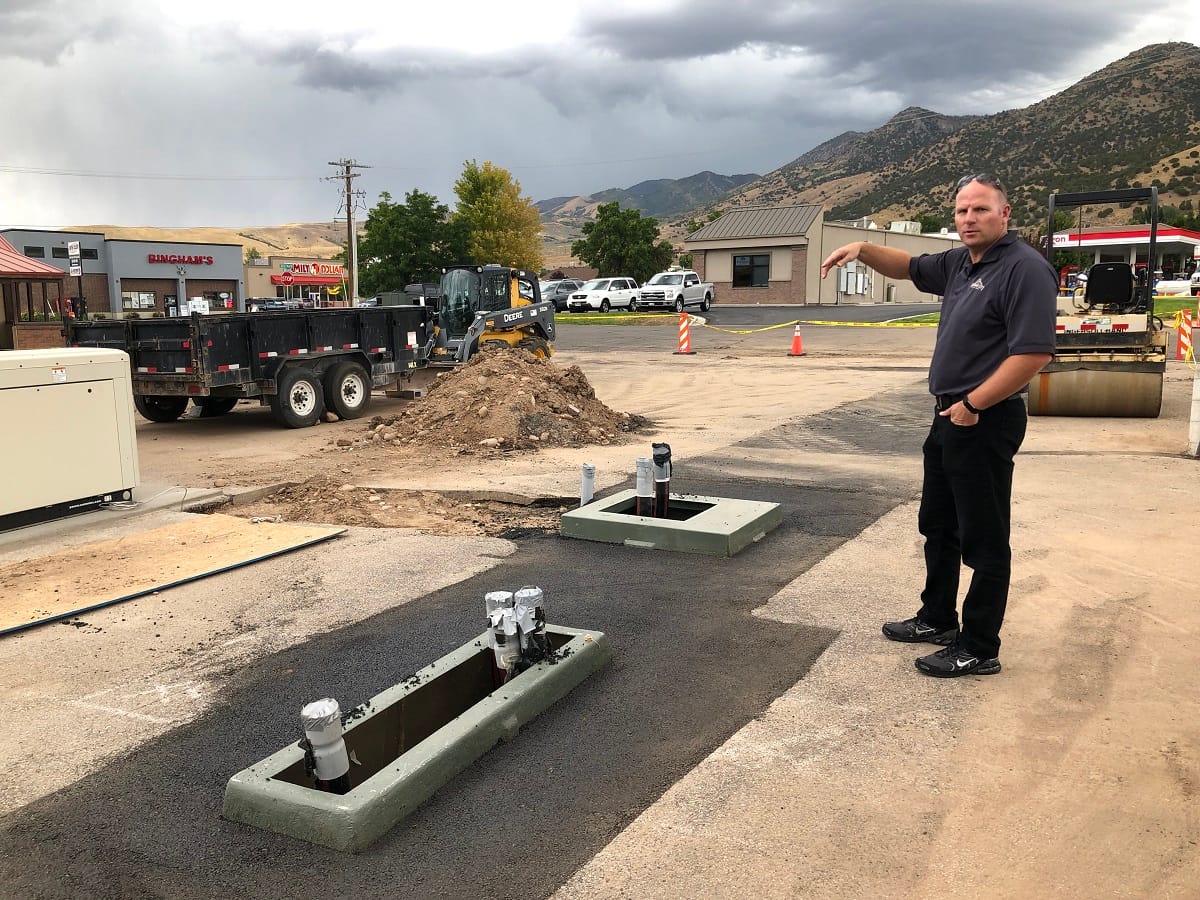UTOPIA Fiber: A Model Open-Access Network
The largest open-access network in the United States has been a boon to its 11 member cities.
Drew Clark

If you mention UTOPIA Fiber to a broadband network operator outside Utah, he or she is likely to say, “We don’t want our project to be the next failed UTOPIA.”
 Broadband BreakfastBroadband Breakfast
Broadband BreakfastBroadband Breakfast
If you mention UTOPIA Fiber to a resident in one of the 11 Utah cities in which the open-access broadband network operates, he or she is likely to say: “My neighbors love UTOPIA, and I can’t wait until I get it to my home!”
The term “failed UTOPIA” has been bandied about excessively over the past decade. As a result, even advocates for municipal broadband occasionally distance themselves from this robust open-access network officially known as the Utah Telecommunications Open Infrastructure Agency. It is the largest open-access network in the United States.
The on-the-ground reality in Utah reveals a completely different picture about the fiber network. It has been a boon to its 11 city members, including West Valley City, Orem and Layton – the second, fifth and ninth largest cities in the state.
Now, many more communities in the intermountain West, including Idaho Falls, Idaho (population 61,000), and the small Utah communities of Morgan (population 4,200), West Point (population 9,511) and Woodland Hills (population 1,300), are seeking and getting UTOPIA Fiber.
UTOPIA Fiber is deploying different models depending on the setting. It has a consulting arrangement with Idaho Falls, and has built and operates a city-owned network for Woodland Hills. In Morgan and West Point, UTOPIA Fiber is in the process of financing, building and operating a network in communities outside the state’s more-urban core. This model enables new communities to join the network.
With this expanding footprint, UTOPIA Fiber already has begun to exert a more significant influence on a U.S. broadband market that is gradually waking up to the enormous civic and competitive benefits of open access. Equally significant is the flexible approach UTOPIA Fiber has taken in working with cities, recognizing that each one is unique and that community broadband providers need to be flexible to make a fiber-to-the-home project work.
Thriving, Not Failing
UTOPIA Fiber’s customer service ratings are substantially better than those of other major ISPs in Utah, including Comcast and CenturyLink. Consider the Net Promoter Score, an industry-accepted index measuring the willingness of customers to recommend a company’s products or services to others. The metric ranges from -100 to 100, and is seen as a proxy for gauging customers’ overall satisfaction and loyalty. UTOPIA Fiber’s Net Promoter Score of 64 contrasts very favorably with Comcast’s -3 and CenturyLink’s -6.
As an open-access network operator, UTOPIA Fiber’s typical model is to own and operate the fiber middle-mile and last-mile network, with residential customers purchasing service from one of 10 competitive internet service providers. About 30 ISPs offer business services on UTOPIA’s network.
UTOPIA charges a flat fee of $30 per month for its infrastructure, and providers offer internet services for prices that are generally $35 per month for 250 Mbps download and upload or $48 per month for 1 Gbps symmetrical service, for a total of between $65 and $78 per month.
UTOPIA welcomes any provider that meets service level guarantees and would allow Comcast and CenturyLink to sell service through its infrastructure. So far, these incumbents haven’t been interested in doing so.
UTOPIA Fiber has earned the respect and business of other service providers, however, including Beehive Broadband, SumoFiber, Veracity Networks and XMission. Some of these ISPs are local exchange carriers that own their networks and offer exclusive internet services within given geographical footprints. For UTOPIA Fiber, they are willing to sell monthly service for less revenue on the collective infrastructure that the 11 cities originally paid to build.
Turning a Corner Financially
UTOPIA Fiber has turned an important corner in its financial performance. “There was a period where many considered UTOPIA a failure,” says UTOPIA Fiber CEO Roger Timmerman. “The city leaders were visionaries and always believed in the benefits a community-owned network would provide, even if the original build didn’t meet the expected financial benchmarks.”
But, Timmerman adds, “For the past nine years, UTOPIA Fiber has had a successful track record. The second phase of the project (from 2010) has been hugely successful. We have expanded the system with new bonds totaling more than $125 million, and with these projects paying for all of the debt and operating expenses from subscriber revenues, there’s no cost to the participating cities.”
UTOPIA Fiber’s net revenues have begun to pay down the infrastructure debt that the 11 cities incurred to build the network. The UTOPIA board, as well as that of its sister entity, the Utah Infrastructure Agency, are led by mayors, councilmembers and city managers of the 11 cities that joined together in an interlocal entity to create UTOPIA in 2002.
Now, the biggest complaint about UTOPIA has been limited service availability. In 2014, of residences within the 11 cities, 52 percent were built out. Today, 80 percent of those residences are built out. That equals 94,000 residents and businesses now able to obtain gigabit-level symmetrical fiber internet service. Everyone on the network is also able to get 10 gigabit symmetrical service.
In a further show of confidence, earlier this year UTOPIA Fiber published precinct-level maps showing availability dates for service in the 11 cities in the next three years, as well as in expansion cities.
“UTOPIA now uses a self-sustaining model to expand the network,” Orem City Council member Sam Lentz recently wrote about UTOPIA’s progress. “We are connecting neighborhoods at an unprecedented rate, and the growing popularity of the network generates more subscriber revenue, reducing the debt burden of Orem and other member cities.”
A Model Network
Now that multiple open-access networks (e.g., SiFi Networks, Lit Communities, Next Level Networks) are gaining momentum in the United States, UTOPIA Fiber is more than just a touchstone and a model – it’s an active competitor for the municipal business.
“The demand for municipally owned fiber has skyrocketed, and we are excited to be a leader in the industry,” says Timmerman. “Over the past four years, UTOPIA Fiber has doubled the number of subscribers on its fiber network and has entered into partnerships with several additional communities.”
In addition to the 11 cities that are voting members of UTOPIA Fiber – including Murray, Brigham City, Centerville and Lindon, as well as the larger ones mentioned above – UTOPIA Fiber has expanded to new communities, each of which offers something new for UTOPIA Fiber.
Expanding to Idaho
Idaho Falls is UTOPIA Fiber’s first out-of-state initiative. There, the network serves as a consultant and “back office” manager for Idaho Falls Power, which launched its own fiber network, Idaho Falls Fiber, in March 2019. In October, the city council unanimously voted to continue with the fiber expansion throughout the entire city.
The Idaho Falls broadband experience began in 2000, when it built a dark fiber network for the use of the city and its electric utility. By leasing fiber to the Idaho National Laboratory and businesses, the city paid off all its debt in 2012, “a lot faster than we expected,” according to Bear Prairie, Idaho Falls Power and Idaho Falls Fiber general manager.
As the city began to consider ways to bring fiber to the home, it focused heavily on open access. “We had a fair amount of infrastructure in place,” said Prairie. “I wanted to focus on what we do well as a city and as a utility. We are really good at maintaining infrastructure – on poles, underground – and keeping wires connected. We are probably not as good in the competitive retail space.”
That led the city to model the open-access approach, in which Idaho Falls would bring the infrastructure, and allow other entities to compete to be the ISP.
“We are using UTOPIA’s software and network architecture to set up the network, manage the network, and provide consulting service,” Prairie said in an interview. He points out that the Idaho Falls Power municipal utility owns and operates the network, including the optical network terminal at the home.
Once Idaho Falls determined that it wanted an open-access network, the city decided to tap into the broadband expertise of UTOPIA Fiber, its neighbor to the south.
Of the four ISPs offering service on the Idaho Falls Fiber network, three are Idaho Falls-based (Qwk.net, SilverStar, and Direct Communications), with SumoFiber from Utah, although it was active on the Idaho Falls dark fiber network before the UTOPIA Fiber partnership. The basic price point for service is $30 per month to Idaho Falls Fiber, then $35 per month for 250 megabits symmetrical service, and $43 a month for gigabit symmetrical service, a total customer price of $65 for 250 Mbps and $73 for 1 Gbps.
UTOPIA in Woodland Hills
Woodland Hills is a small and low-density but affluent community on the periphery of Utah County. The community badly wanted broadband infrastructure for more than eight years, says Kari Malkovich, a city council member.
Building lots are at least 1 acre in Woodland Hills, which nestles up against Santaquin Peak and other mountains, so most citizens’ options were limited to satellite. It was difficult to find any provider who would come in, said Malkovich. “Most of the service that we were getting before was satellite service. There were a few, such as CenturyLink, that came up to the edge” of the community.
After years of consideration, the city began to save its taxes in a dedicated fund with an eye toward building its own municipal fiber network. The
most attractive model was partnering with an open-access provider, such as UTOPIA Fiber.
“If we are going to put taxpayer dollars into the network, we want to make sure it allows for competition,” says Malkovich. “We did a lot of homework, and it came to the point where we said, ‘If we own the system, then we have control and can let someone else manage it.’”
After a bid, UTOPIA came in with the best offer.
The $1 million that the city had saved funded a 400-home buildout of fiber throughout the community, averaging $2,500 per home. Then there was an additional cost of $1,500 per household for the drop to individual residences, which was homeowners’ responsibility.
Malkovich says that the city’s revolving broadband fund will finance the construction for $25 per month, which is tacked on to the $65 to $78 per month combined bill for UTOPIA Fiber’s infrastructure operations and the ISP’s internet services.
In anticipation of the city’s building its own network, many households constructed their own drops through an ad-hoc infrastructure of local fiber installers. Now those homes have been hooking up to the UTOPIA Fiber network.
Open Access In Rural Areas
The rural community of Morgan, Utah (and more recently in West Point, Utah), is where UTOPIA Fiber’s vision for gradual community-by-community network expansion is most fully realized.
A rural community without even a stoplight, Morgan is on the least-populated side of the Wasatch Mountains. It was left in the lurch when Comcast left town and stopped providing service. (CenturyLink’s DSL was unreliable.) But with a municipal power system, Morgan felt comfortable managing lines and poles. The community began exploring options to bring a new broadband provider to town.
“The more we researched it, the more comfortable we felt about it,” says Ty Bailey, Morgan city manager. “More than economic development, this is just basic service” that the city needs to offer if no one else will. UTOPIA Fiber’s willingness to bring the open-access model to Morgan became “a really good solution for us.”
As with any fiber-to-the-home network, UTOPIA Fiber’s costs are a mixture of one-time infrastructure costs and ongoing costs for backhaul transport, network operation and internet services. People associated with the UTOPIA Fiber network speak of the 30 percent penetration rate as an important threshold for profitability, even in rural communities such as Morgan.
When times were tougher for UTOPIA, the 11 cities with voting membership bickered among themselves about which city would be the next to get construction. In that era, expansion plans were never part of the discussion.
But with continual growth in subscriber base and revenues, operating revenue at UTOPIA Fiber has been more than sufficient to cover the $125 million in new bonds. That has allowed new construction in small communities such as Morgan and West Point to get service – even when they needed UTOPIA Fiber to bring in the financing and even as bigger cities were being built out, says Timmerman.
In the case of Morgan, the $2.6 million is funded by UTOPIA Fiber, but the city guaranteed 30 percent coverage. The city needs to fund any shortfall if the subscribership level falls below the 30 percent benchmark. That, in turn, makes it possible for the city and UTOPIA Fiber to agree on a whole-city build. Construction started in November and will be completed by early 2020.
“We are thrilled to bring UTOPIA Fiber to our growing community,” says Ray Little, Morgan’s mayor. “Our residents and businesses have been in dire need of better, faster and more reliable options for internet, and UTOPIA Fiber will be providing the best possible solution for our city.”
Drew Clark, the editor and publisher of BroadbandBreakfast.com, is also a telecommunications attorney. He is president of the Rural Telecommunications Congress, which advocates for better broadband data and planning, next-generation infrastructure investments, and digital literacy education. This article originally appeared in Broadband Communities, and is republished with permission.











Member discussion